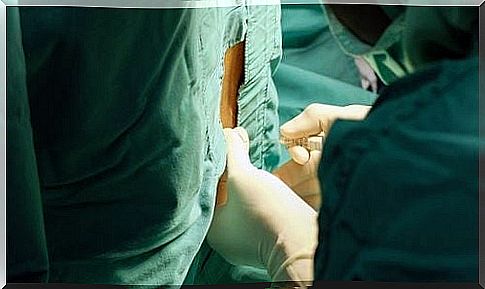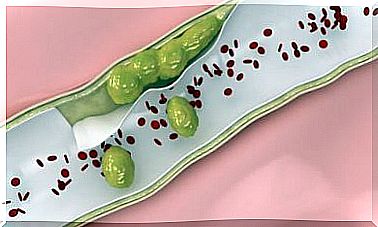Lumbar Puncture Headache: Causes And Treatment

Lumbar puncture headache is estimated to affect about 40 percent of people who undergo spinal tap or spinal anesthesia. However, it should not be a cause for concern as it is generally a nuisance that is bound to resolve spontaneously.
Lumbar puncture is a procedure performed for diagnostic, therapeutic purposes or to apply local anesthesia. In some cases it can cause a reduction in intracranial pressure; this, in turn, can trigger a headache.
The first lumbar punctures date back to the late nineteenth century. At the beginning of the following century, the incidence of lumbar puncture headache was 60%. Over time this percentage has dropped further, and the practice is still in use today.
What is a lumbar puncture?

Lumbar puncture is a medical procedure used to collect cerebrospinal fluid that is found around the brain and spinal cord, acting as a kind of cushion. In addition to that, it is also performed to inject anesthesia or a drug.
The doctor inserts a needle between two lumbar vertebrae, inside the spinal canal. Depending on the purpose of the sting, then perform one of the following actions:
- He extracts a sample of cerebrospinal fluid, which will be examined in the laboratory.
- Withdraw a certain amount of fluid to reduce the pressure in the spinal canal.
- Inject an anesthetic or drug.
Finally the needle is removed. If there is profuse leakage of cerebrospinal fluid, the pressure in the cranial cavity is reduced, causing headaches.
Lumbar puncture headache
Headache after lumbar puncture typically occurs bilaterally, that is, on both sides of the head. It is typical for it to arise immediately or, in any case, no longer than five days after the sting. It typically goes away on its own in less than a week.
Pain tends to get worse when sitting or standing. It is therefore advisable to remain lying down. Headache occurs mainly in women between the ages of 18 and 30.
On the other hand, the intensity of the headache largely depends on the type of needle used, the technique applied and the skill of the professional performing the procedure. The smaller the needle thickness, the lower the risk of headaches. With very fine needles, the incidence drops to 11%.
Lumbar puncture headache is characterized by a throbbing, dull pain, ranging in intensity from mild to disabling. The pain increases when standing and decreases when lying down.
It can be accompanied by other symptoms such as dizziness, buzzing, double or blurred vision, nausea, hearing loss, stiffness and pain in the neck. MRI reveals, among other things, a decline in intracranial structures.
The diagnosis is clinical. Your doctor may request an MRI or other tests to rule out other possible causes of the headache.
Other data to consider
In case of lumbar puncture headache the ideal is to remain lying down for a period of not less than 12 hours. The pain typically appears 15 minutes after getting up, so it is not contraindicated to perform certain actions such as getting up to go to the bathroom or to eat.
Drinking plenty of fluids helps recover lost CSF, especially in the next 24 hours. Likewise, unless otherwise stated, it is advisable to drink coffee or caffeinated beverages.
The headache should subside. If the pain does not decrease or even increases, you need to see a doctor as soon as possible. The same is true for vomiting, tingling, numbness in the legs, difficulty urinating, pain or bleeding at the needle insertion site.









